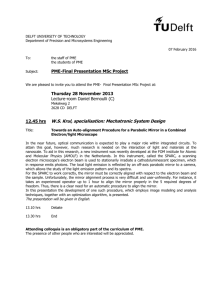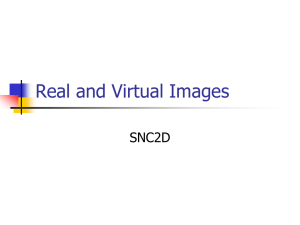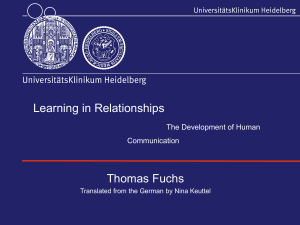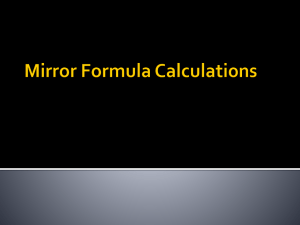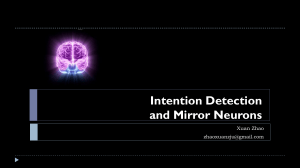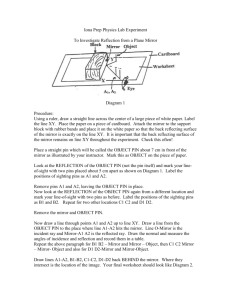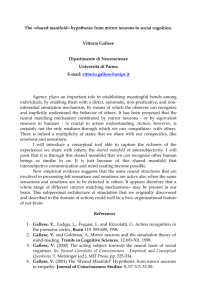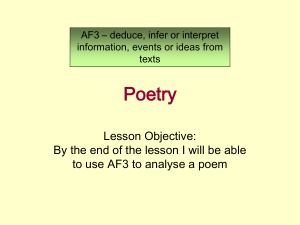Slides - ACEFINMOD.com
advertisement
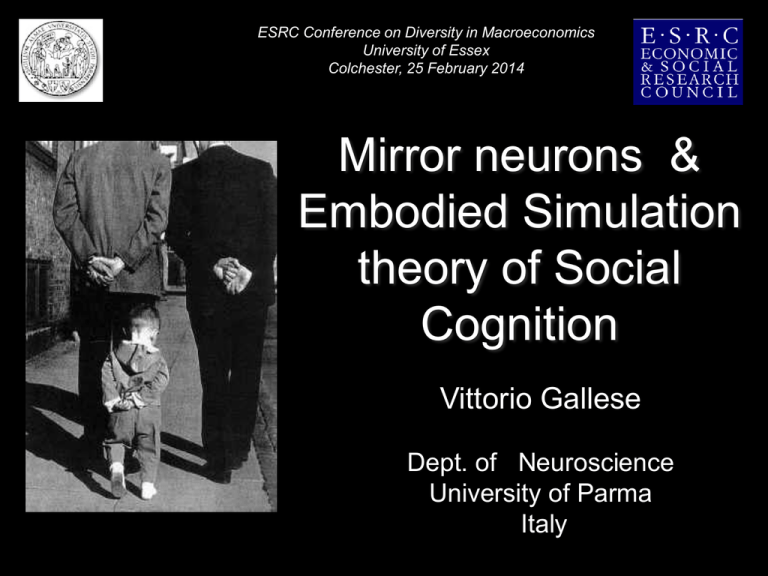
ESRC Conference on Diversity in Macroeconomics University of Essex Colchester, 25 February 2014 Mirror neurons & Embodied Simulation theory of Social Cognition Vittorio Gallese Dept. of Neuroscience University of Parma Italy How do we give sense to the natural evidence of the world of others? ? A bottom-up approach to social cognition Mirror Neurons Mirror neurons discharge at the moment of motor goal accomplishment Population analysis MNs (Rochat et al., submitted) • MNs discharge during the accomplishment of the motor goal, regardless of the movements employed. • MNs discharge significantly more during action execution than during its observation. Mirror neurons in Humans The Mirror mechanism for action in humans Trans. Distal mov. Tool use Reaching mov. Intransitive mov. Upper limb mov. Mirror mechanisms in humans The same cortical sites are activated during execution/observation of: •Object-directed actions •Communicative actions •Body movements Three Conditions,Two groups, Two Instructions: 1) Simply watch 2) Pay attention to: a) What kind of objects b) What kind of grasp c)What kind of intention (Iacoboni, Molnar Zacks, Gallese, Buccino, Mazziotta, and Rizzolatti PLOS Biology (Iacoboni, Molnar Zacks, Gallese, Buccino, Mazziotta, and Rizzolatti PLOS Biology 2005) Mirror mechanisms in humans Linguistically described actions Tettamanti et al. J Cogn Neuroscience 2005 The same cortical sites are activated during action performance and while listening to or reading words or sentences describing actions. The discovery of MNs in the macaque monkey brain and in the human brain suggests that a more direct access to intentional states of others is available. My point • At the basis of the capacity to understand others’ intentional behavior – both from a phylogenetic and ontogenetic point of view – there is a basic functional mechanism, embodied simulation, which exploits the intrinsic functional organization of the motor system and a variety of mirror mechanisms. The tip of the iceberg Mirror mechanisms in humans Other cortical sites (Insula, SI, SII, Amygdala) are activated during experience/observation of: •Emotions (disgust, pain) •Sensations (touch) The mirror mechanism Maps the sensory representation of the action, emotion or sensation of another onto the perceiver’s own motor, viscero-motor or somatosensory bodilyformatted representation of that action, emotion or sensation. This mapping enables one to perceive the action, emotion or sensation of another as if she were performing that action or experiencing that emotion or sensation herself. • ES theory provides a unitary account of basic aspects of social cognition, showing that people reuse their own mental states or processes represented with a bodily format in functionally attributing them to others. • MM-driven ES plays a constitutive role in basic form of mind-reading. • This form of mind-reading does not require propositional attitudes, being mapped onto mental representations with a bodily format (i.e. motor representations of goals and intentions as well as viscero-motor and somatosensory representations of emotions and sensations). We do not necessarily experience the specific contents of others’ experiences, but experience others as having experiences similar to ours. Thank You!

